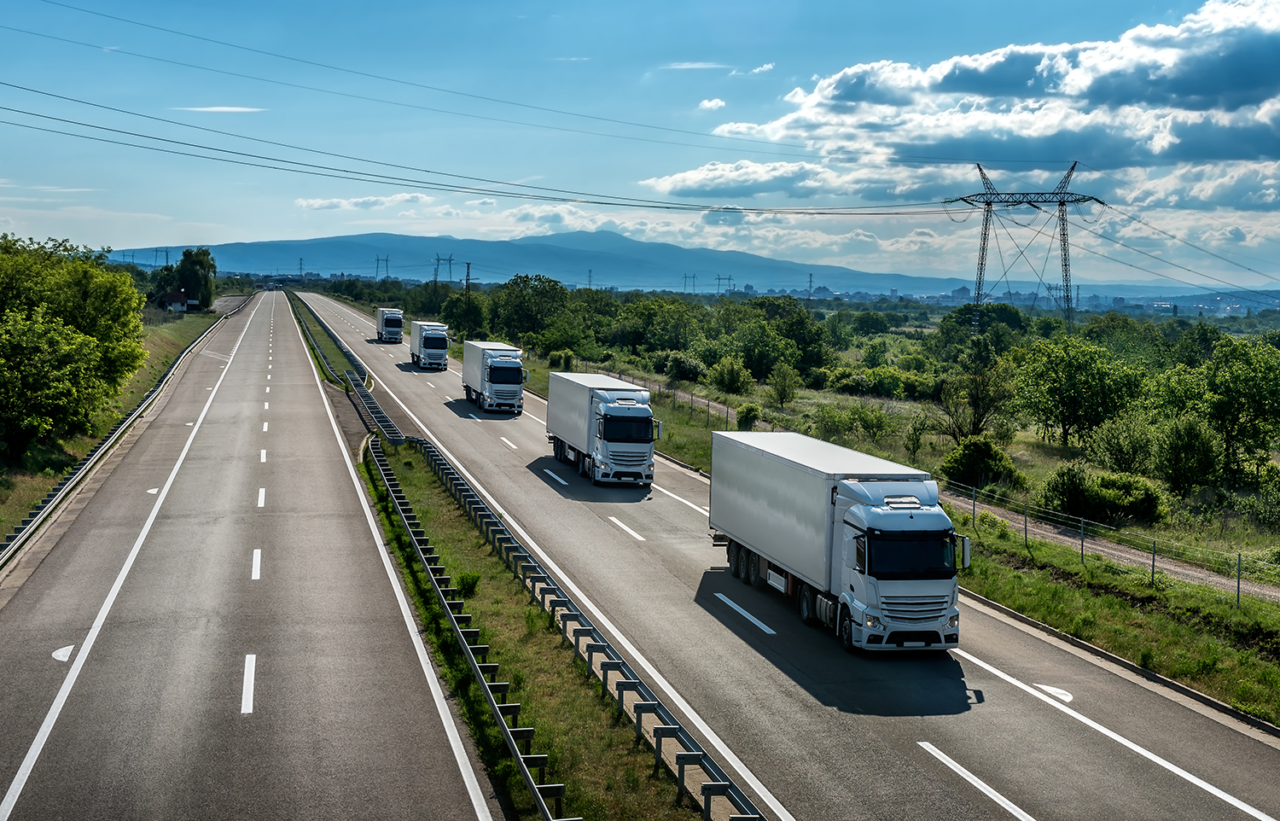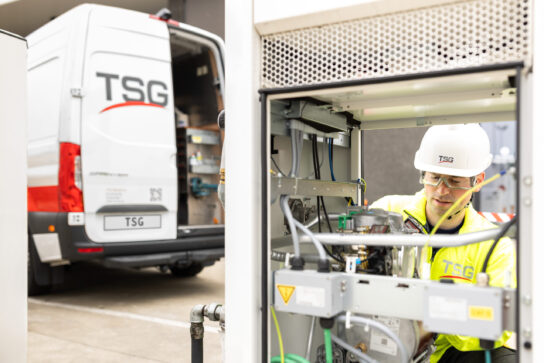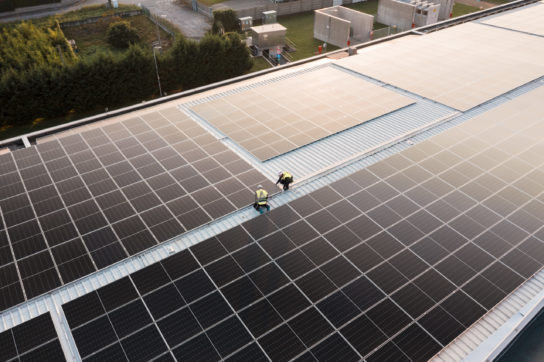Gas-Powered Fleets Transform Haulage
EU and UK regulations* stipulate a 15 percent reduction in greenhouse gas emissions from heavy goods vehicles (HGVs) by 2025 and a 30 percent reduction by 2030. Given the current shortage of electric and hydrogen lorries, along with the associated infrastructure, could gas serve as a viable medium-term solution?
*Source: Legislation.gov.uk
Road haulage is currently dominated by diesel power and therefore a major source of CO2 emissions. Electric and hydrogen lorries would be the ideal solution, especially if the energy used to drive them is generated entirely from green sources. However, whilst the UK is advancing towards a more sustainable transportation sector, progress remains slow, highlighting the need for a more immediate solution. This is where Compressed Natural Gas (CNG) and Liquified Natural Gas (LNG) can rise to the occasion, offering a short to medium-term remedy to reduce polluting exhaust fumes.
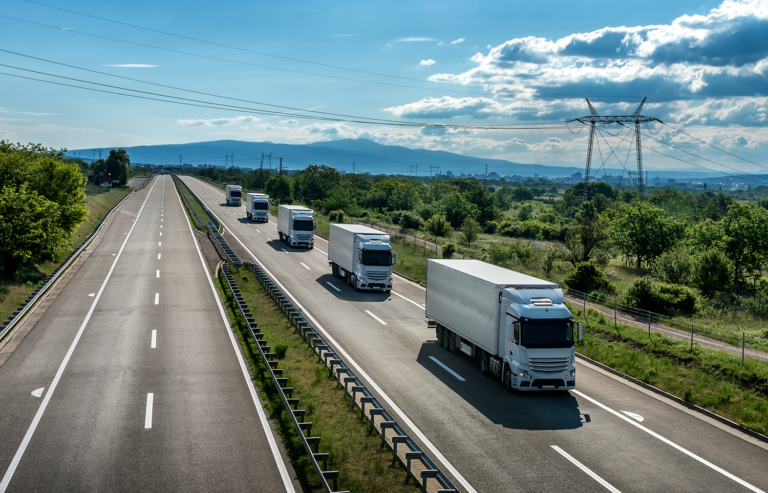
The Shift to Sustainable Energy
Switching from diesel-powered lorries is an extremely challenging proposition for long-distance haulage operators. Diesel has traditionally been the fuel of choice for logistics companies due to several key advantages: greater power and efficiency, economical running cost per mile and a well-established refuelling infrastructure.
However, the haulage operators of the future must be more environmentally friendly and cause as few direct emissions (tailpipe) and indirect emissions (vehicle manufacture) as possible. Until a serviceable range of electric and hydrogen lorries is widely available, LNG and CNG technologies, including their bio-derivatives, can help operators meet the new regulations.

LNG or CNG Conversion from Diesel
Some diesel lorries can be converted to operate on natural gas using dual-fuel systems, allowing the engine to run on a mixture of diesel and natural gas, dramatically reducing diesel consumption. Or by replacing the engine with a dedicated natural gas engine, designed specifically for LNG or CNG, which will provide better performance and efficiency.
However, not all engines are suitable for conversion, LNG and CNG require larger storage tanks compared to diesel. The vehicle must have enough space to accommodate these tanks without compromising payload capacity.
Budget permitting, there is always the option to purchase lorries that were originally manufactured to run on natural gas, making the transition straightforward.
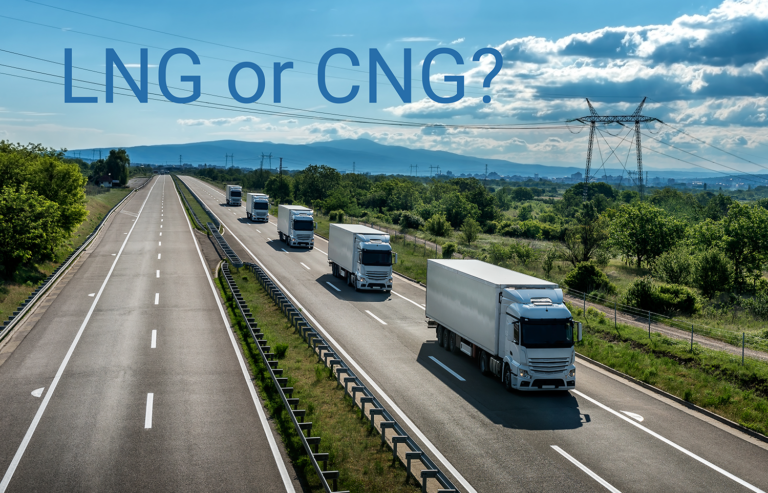
LNG or CNG – Which is the Best Option?
LNG has a higher energy density and occupies much less volume than CNG. To produce LNG, natural gas is cooled to below -161°C, causing it to liquefy. This process reduces the volume of natural gas by a factor of 600 compared to its gaseous state. As a result, LNG can be stored in large quantities, making it particularly suitable for long-distance road haulage.
Although LNG can be more costly due to the requirements for cryogenic storage and handling, LNG lorries offer faster refuelling times, making them ideal for operations where quick turnaround is crucial.
CNG is generally cheaper to produce than LNG and more widely available, making it a cost-effective option for many fleet operators. CNG is compressed to less than one percent of its original volume, allowing a substantial amount of gas to be stored in the tank for longer distances. However, even with this compression, CNG vehicles require more space for the gas tank compared to LNG lorries. This space requirement can impact the load capacity and limit the range capability of the vehicle. Therefore, CNG lorries are well-suited for urban and regional deliveries where the distances are shorter and the need for frequent refuelling is less of an issue.

Bio-LNG and Bio-CNG
Bio-LNG, also known as liquefied biogas, primarily consists of methane. It is a non-fossil fuel produced by converting biogas from organic waste, such as animal manure, sludge and food waste, into high-quality biomethane, through a process called anaerobic digestion. The biomethane is then liquefied at -161°C to form bio-LNG. Compared to LNG, bio-LNG has significantly lower CO₂ emissions and a higher fuel potential (the capability of replacing diesel) than other alternatives like biodiesel. Additionally, bio-LNG can be produced locally, reducing transport costs and carbon emissions while contributing to energy security.
The main difference between bio-LNG and bio-CNG is that bio-CNG is compressed to less than one percent of its volume and stored in tanks designed to withstand high pressures, typically up to 250 bar, ensuring safe storage and transportation of bio-CNG. This compression results in a shorter range for the lorry compared to using liquefied gas. As with bio-LNG, compressed biogas (bio-CNG) can be produced locally and is a non-fossil fuel, whereas conventional CNG and LNG are derived from fossil fuels.
Both bio-LNG and bio-CNG offer significant environmental benefits by reducing greenhouse gas emissions and providing renewable alternatives to fossil fuels.
TSG Gas is here to help
TSG has been a trusted supplier of equipment to the retail fuel industry for over 30 years and will continue to support fossil fuel sites for the foreseeable future. However, TSG is now also establishing a strong presence in the new energy sector by supplying, installing and maintaining the essential equipment needed to help haulage operators transition to CNG or LNG.
Additionally, TSG offers unparalleled aftersales support to assist customers following installation. With a large team of highly skilled technical engineers and advisers available seven days a week, TSG ensures comprehensive coverage for any situation. The cornerstone of a successful transition is the implicit trust formed between the customer and the supplier during and following installation. Clients can have complete confidence in the reliability of their equipment and trust that TSG will provide the necessary support, advice and maintenance services for as long as it is required.
TSG provides a vast array of products and advanced solutions to assist fleet managers to maximise the potential of the site, streamline processes and increase cost efficiency.
Author: Cheryl Ashton
